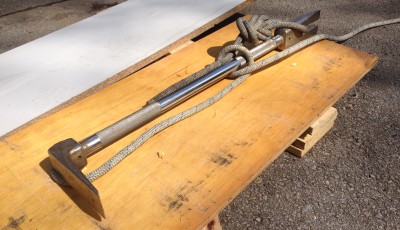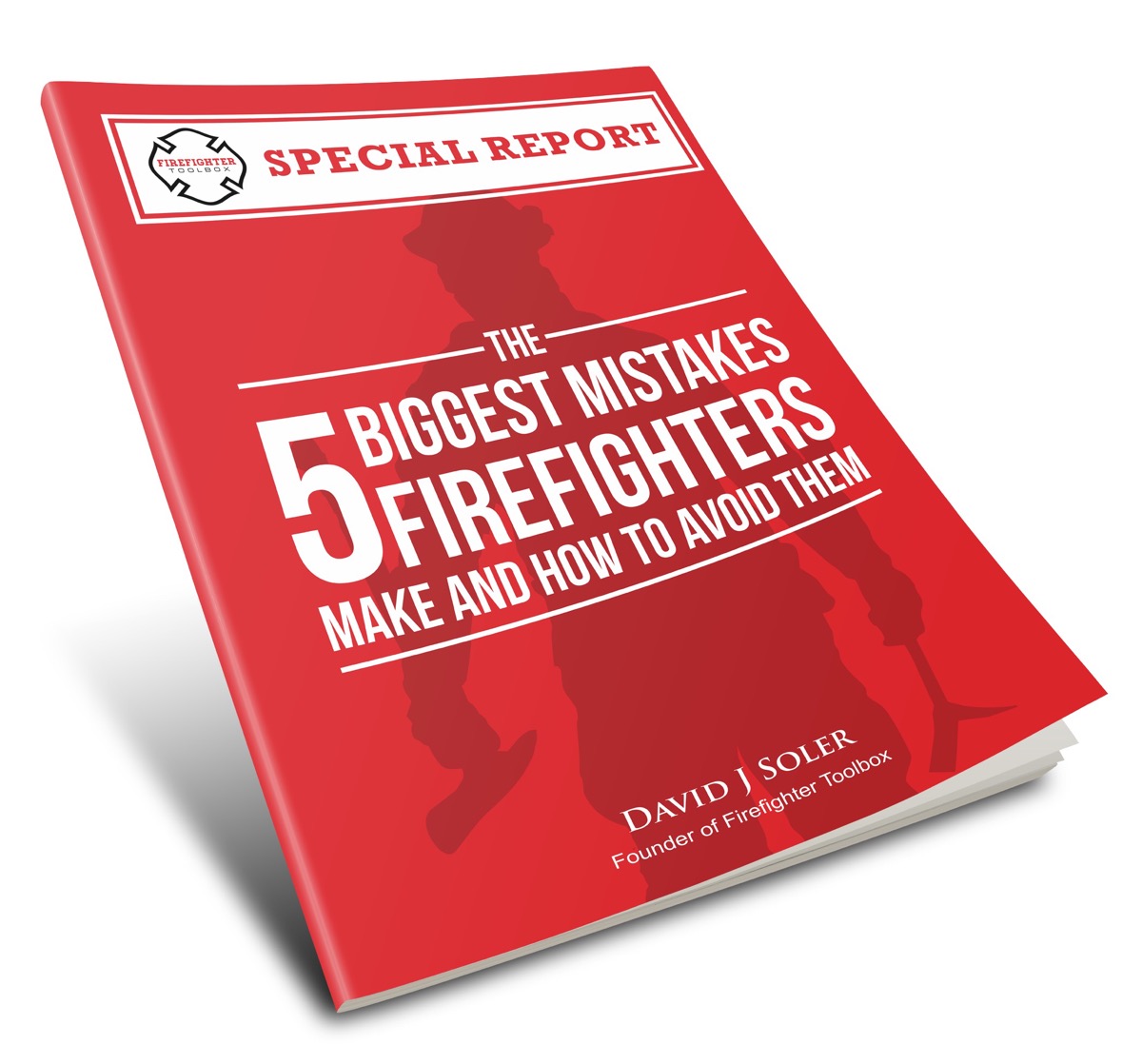Tactical Ventilation and PPV
Over the last 20 years we have seen the use of Positive Pressure Ventilation (PPV) in offensive structural firefighting evolve. This concept got it’s start in the United States back in the early 1980’s on the west coast. It was originally utilized to assist the attack crew with a high flow of air behind the attack crew to assist them in making the push to the seat of the fire.
It was used with a fair amount of success when it was conducted in coordination and proper timing with ventilation opposite the attack crew entry. Over the years as this tactic has evolved across the country, it has morphed into what I believe is a dangerous tactic of uncoordinated use of high flow fresh air into structures without the proper vent opposite the attack crew before they make their entry.
Theory
This practice has resulted in rapid fire growth and “blow back” of that growth on many attack crews. There are several videos available online to demonstrate this predictable fire behavior. Here is one example. It is in German but it speaks volumes.
https://www.youtube.com/watch?v=iTInZhv4ZyE
How do we use PPV properly?
First , I am not an avid fan of the use of this tactic in the initial stages of attack. This is primarily due to the fact that after functioning in the fire service for many years, I have come to the conclusion that we (the fire service) are not very good at being coordinated in our attack 100% of the time. In utilizing PPV we must be 100% coordinated between the attack crew and vent crew 100% of the time. The end result of an uncoordinated use of PPV could be fatal and has been proven to be dangerous.
So, how does PPV work as a tactic in the initial stage of attack? We must first have a very good idea where the fire is located. We must have a charged, bled and adequate sized and staffed attack line at the entry point ready to go. Then we must create or ensure that an adequate outlet (vent point) at least 2/3 the size of our inlet (vent point) is open opposite our attack position. Then and only then can we put our fan in service behind the attack crew’s entry point so that the airflow covers the doorway completely (to check this principle, no smoke should be exiting the doorway). Be prepared for rapid fire growth, as it will occur.
If smoke is exiting at the doorway (inlet) then two things are possible. The fan air curtain is not covering the entire opening or worse the outlet vent point is inadequate to handle the heat and byproducts due to fire growth. If the latter is the case, do not put your attack crew on a path to destruction. Shut the fan off and make more or larger openings opposite their advance.
PPV is a great tool, you just have to know, and meet, all the criteria for use! Some other excellent uses of PPV are for smoke removal, maintaining clear and positively charged stairwells in occupancies, and as a means to move/push gases (HazMat) in a direction away from occupants.
In conclusion, if you cannot meet the parameters for using PPV in attack mode then don’t. Use the tried and true method of manual means of Tactical Ventilation. If you train, use and critique PPV on fires you will find it to have many benefits, just remember the drawbacks are painful! Until next time, be safe stay low and keep learning your life depends on it!!













Good write up on this, however, a few points need to be addressed. One, the exhaust should be two to three times the inlet opening, and, two, instead of completely enveloping the inlet opening with the cone of air, leave the top twelve to sixteen inches open as an indicator of interior conditions. With this setup, you will be better able to determine if your exhaust openings are adequate. With adequate exhaust, the space above the cone will be negative pressured much like a fog nozzle through a window, whereas, without adequate exhaust, smoke will be pushing out of that opening. Just a couple of things learned from Kriss Garcia that make a huge difference, especially after utilizing them and seeing the difference.
Ernie,
Thanks for the feedback. I believe we are on the same page. The chance of making openings as big as 2 to 3 times the size of the front door in reality are somewhat remote. My experience has shown that in most cases we struggle to get the 2/3 the size done correctly. Your suggestion on the air cone is spot on, I used this technique several times and it works well! It is a great check for how the uniflow flow path is working. I plan to write some more on this topic, we could spend hours. Take care and continue learning and sharing!!!
Mike
As a backend man, it is often my job as ordered by my captain to place the blower at point of entry. We use this tactic more often than not in my dept. I will be doing research on my own but I was confused after reading the article and then reading the comments. What should I look for at the front door for proper placement of the blower? Thx guys great read.
Alex,
Sorry if some of this was confusing. PPV in attack mode is not only confusing it is a work in progress. As we learn more about this tactic, we learn more about how coordinated it must be done. In my opinion, if you use this tool in the attack mode, you (meaning the operator) must ensure the exit point is adequate to allow for complete uniflow away from the attack and search crews. After placing the fan, if you have any blow back of smoke from your inlet it is a true indication that the outlet is insufficient for the produced heat and gases. In other words bad things are about to happen. By blow back I mean smoke more than a wisp. If you are using this tool as a smoke remover and not in the attack mode, complete covering of the opening is the best practice. Leaving the top of your opening outside your “cone” allows for an easier read for heat conditions and the effectiveness of the PPV. My suggestion is try this technique in your next live fire training and see how it works for you.
Thanks for reading and feel free to contact me and let me know if this helps.
Mike
First let me say that this is a great topic with great information. I simply want to add to the area of “blowback”. This isn’t always a result of am under sized outlet. We must also consider it an indicator of an obstruction between the entry point and the fire. For example hoarder conditions or simply a closed door.
Craig,
Great points!!!! I especially like your hoarders condition thought. It is absolutely an issue that effects blow back and a whole host of other fire conditions.
Mike
Thanks for a great write up. PPV/pPA gets a bad rap from some who don’t understand ventilation. Also, just on a side note: it is possible to get blow back because the fan can overpower the building. Instead of just shutting it down try throttling the fan down to match the space of the building.
Just want to make a few points regarding Earnie’s input.
Wayne Humphries, from FireWorks in Vancouver, has a different theory on ventilation that I have bought into. Firstly, the “diagnostics space” or the top portion of the door that is left to check for adequate exhausting. This can be a useful too, however, IF you have guys inside that door, what have you just created behind them? An exit. That means the super heated unburned fuel (aka smoke) is moving over their heads. Thus, a flashover potential.
HOWEVER, if your cone of air seals the door, you can pressurize the building. Positive Pressure Pressurization (PPP) will help contain the fire to it’s location as fire wants to travel towards lower pressure zones. Now your attack team can move into the structure with out the threat of fire creeping towards the exit behind them.
I do agree on the large exit, but my research has me thinking that a 1:1 ratio makes the most sense. What goes in travels out at the same rate carrying all the bad stuff with it.
I also agree that coordinating it is a challenge, and each incident will be different. But in a perfect world we will learn this tactic and employ it.
Also reading the smoke (Dave Dodson) is something of a art and I teach to my young FF’s. Just one more tools in the tool box for tactics on when and where for ventilation.
Outstanding points.
That’s the way we having been doing my 20 yrs.
A. Coordinating is critical as stated.
B. Exit and you have to have an exit for the super heated gases to go “I.E. Controlling the flow path where you want it to go”. Exit should be half the size of inlet to over pressurize the building.
C. Interior team charged ready to go at the door.
D. In a perfect world use two fans side by side with path between fans to enter and exit building.
I would love to add my 22 years of experience to the mix, with a little science. All could be understood with a brief study of thermodynamics, including Dalton’s Law of Partial Pressures and a knowledge of densities and specific volumes of dry air and water vapor throughout the temperature scale. So you don’t have to hit the books I will tell you why you need to have a exhaust vent 2 to 3 times the size of your vent point. The air you are introducing to the structure has a specific volume at the outside temperature. After you force it into the burning structure its temperature rises and its volume increases (pressure of structure increases). The result can be greater than doubling the pressure of the structure. If you or your attack team puts wet stuff on the red stuff (that’s water on the fire to you young guys), then volume is increased even more substantially. Thus, every cubic foot of cool air added to the the structure along with expansion of water molecules being used requires an opening at the opposite end to be of sufficient size to allow 3 times the air to be exhausted. Does this make sense? It’s my day off and I’ve been drinking.
Thanks Capt.
Most of the time I do my best work with a drink :)